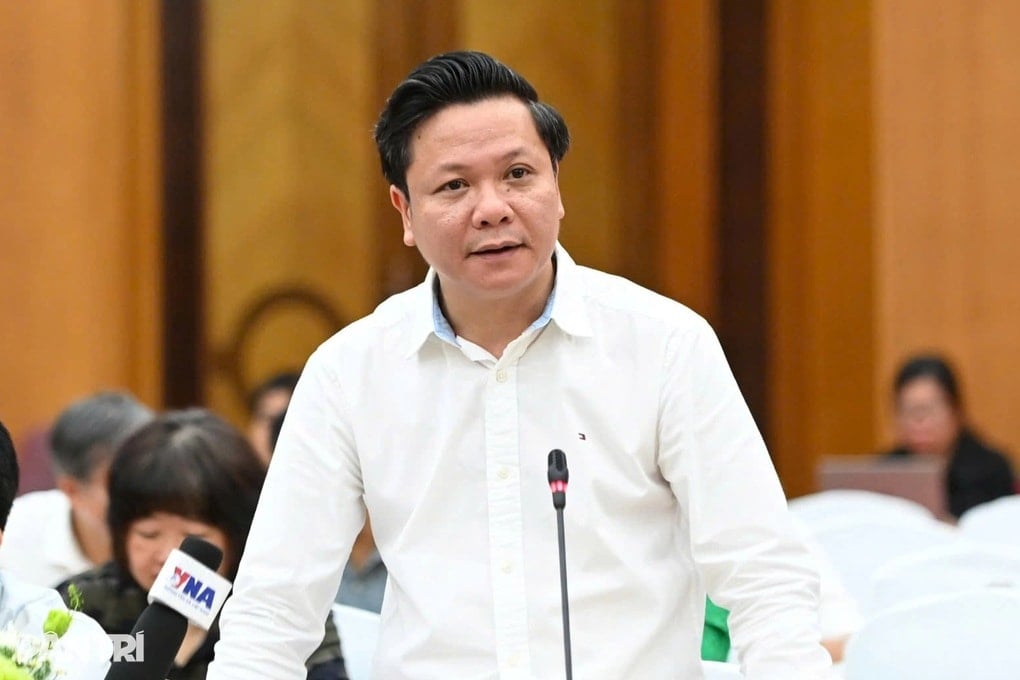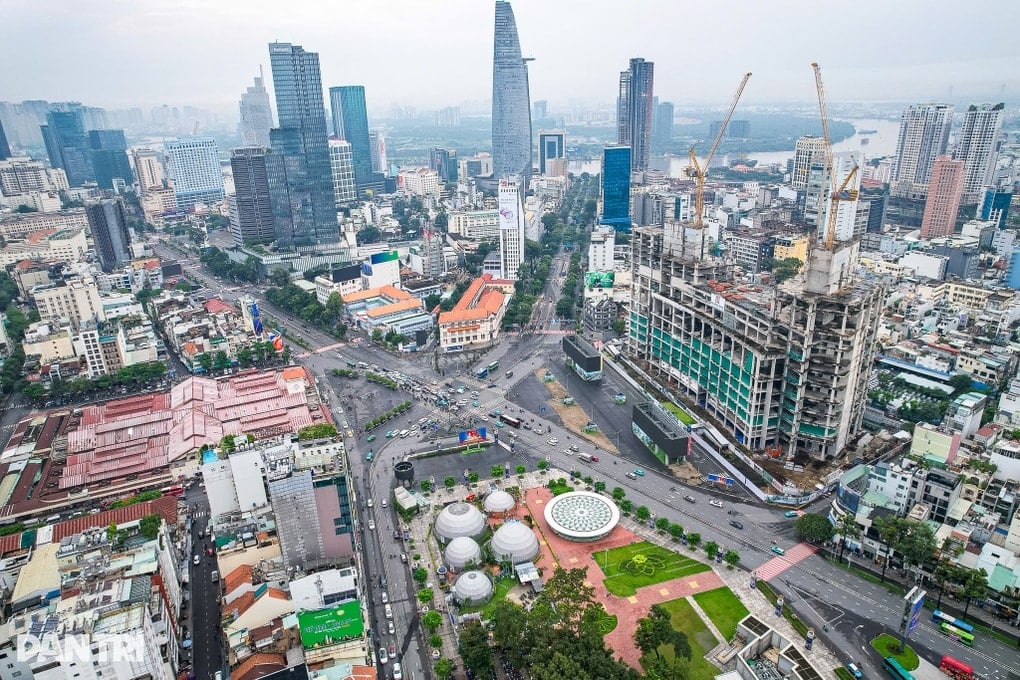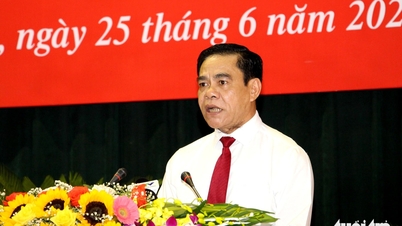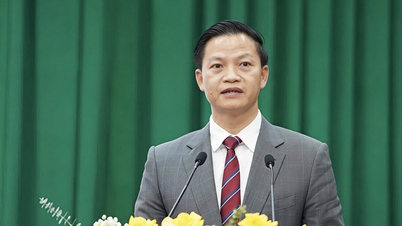"Rearranging the country" towards long-term stability
Speaking to Dan Tri newspaper reporters, Phan Trung Tuan, Head of the Department of Local Government, Ministry of Home Affairs , said that currently the Party, National Assembly, and Government have no policy to continue to reorganize cities or commune-level administrative units.
"The information about the arrangement from 34 provinces and cities now to 16 provinces and cities in the coming period is completely incorrect," Mr. Phan Trung Tuan affirmed.
The decision to "reorganize the country" is a historic step of strategic significance, marking a new stage of development in perfecting the state administrative apparatus, perfecting the institutions and organization of the political system to be synchronous, streamlined, effective and efficient, towards perfecting a modern administrative system, close to the people, serving the people, so that all benefits belong to the people.

Director of the Department of Local Government, Ministry of Home Affairs Phan Trung Tuan (Photo: Hai Long).
In addition to the goal of streamlining the organizational apparatus, streamlining the payroll, reducing budget expenditures for the apparatus; opening up new space and room for development for localities, Mr. Phan Trung Tuan said that the revolution in arranging administrative units at all levels deployed in early 2025 also aims at "long-term stability of the administrative unit system".
This major policy has been carefully researched and considered by the Party, National Assembly and Government before being implemented.
"With the drastic participation of the entire political system, from July 1, the two-level local government model (including provincial and commune/ward levels) has officially operated in all provinces and cities. The whole country has 34 provinces/cities and 3,321 communes, wards and special zones," the Director of the Department of Local Government reiterated.
Previously, on the morning of June 12, the National Assembly voted to pass a Resolution on the arrangement of provincial-level administrative units in 2025. Accordingly, the country has 34 provincial-level administrative units, including 28 provinces and 6 cities.
Of which, there are 19 provinces and 4 cities formed after the arrangement stipulated in this resolution including: Tuyen Quang, Lao Cai, Thai Nguyen, Phu Tho, Bac Ninh, Hung Yen, Hai Phong, Ninh Binh, Quang Tri, Da Nang, Quang Ngai, Gia Lai, Khanh Hoa, Lam Dong, Dak Lak, Ho Chi Minh City, Dong Nai, Tay Ninh, Can Tho, Vinh Long, Dong Thap, Ca Mau, An Giang and 11 provinces and cities that do not implement the arrangement are: Cao Bang, Dien Bien, Ha Tinh, Lai Chau, Lang Son, Nghe An, Quang Ninh, Thanh Hoa, Son La and Hanoi city, Hue city.
Along with the administrative unit arrangement, from July 1, the 2-level local government model (including only provincial and commune/ward levels) has officially operated in all provinces and cities.
Next is to implement the policy of promoting decentralization and strong delegation of power between the central and local levels, between provincial and communal authorities according to the motto: "Locals decide, local authorities do, local authorities are responsible".
The information spread is completely false.
At the same time, Mr. Phan Trung Tuan added that currently, the Ministry of Home Affairs is drafting a Decree guiding the collection of public opinions on the establishment, dissolution, merger, division, boundary adjustment and renaming of administrative units to replace Decree No. 54/2018/ND-CP and Decree No. 66/2023/ND-CP.
Accordingly, the draft decree does not have an appendix with a list of arrangements and mergers from 34 provinces and cities to 16 provinces and cities as is being spread on social networking sites.
"The drafting of this decree is to implement the provisions of the Law on Organization of Local Government No. 72/2025/QH15 and Decision No. 1589/QD-TTg of the Prime Minister promulgating the Plan to implement the Law on Organization of Local Government No. 72/2025/QH15," Mr. Tuan emphasized.

Information about province mergers spreading on social networks is completely false (Illustration photo: Hai Long).
Mr. Tuan informed that this law has had fundamental changes such as the regulation that our country's administrative units are organized into 2 levels, including: Provinces and centrally-run cities (provincial level); communes, wards, and special zones under the provincial level (commune level).
Accordingly, in the administrative unit system, there are no more district-level administrative units, and at the same time, a new type of "special zone" (commune level) is stipulated. However, Decree No. 54/2018/ND-CP and Decree No. 66/2023/ND-CP mentioned above are being designed to guide the collection of voters' opinions on the establishment, dissolution, merger, division, and adjustment of administrative unit boundaries according to the 3-level model (provincial level - district level - commune level).
Accordingly, the Department Head believes that it is necessary to issue a new Government decree to provide specific implementation instructions. The drafting and submission to the Government for promulgation of this decree aims to guide the collection of voters' opinions on common cases of establishment, dissolution, merger, division, and adjustment of administrative unit boundaries.
Specifically, Mr. Phan Trung Tuan gave examples such as the establishment of wards on the basis of communes (rural) when communes meet enough standards and conditions to be upgraded to wards (urban); the adjustment of administrative boundaries in cases of real necessity due to changes in geological and topographical impacts or impacts from socio-economic development that need to be adjusted to suit management practices, not for the purpose of arranging and merging administrative units at all levels as false information has spread on social networks recently.
Source: https://baolamdong.vn/lan-truyen-tin-tiep-tuc-sap-nhap-con-16-tinh-thanh-bo-noi-vu-bac-bo-403277.html




![[Photo] General Secretary To Lam and National Assembly Chairman Tran Thanh Man attend the 80th Anniversary of the Traditional Day of the Vietnamese Inspection Sector](https://vphoto.vietnam.vn/thumb/1200x675/vietnam/resource/IMAGE/2025/11/17/1763356362984_a2-bnd-7940-3561-jpg.webp)































![[Photo] Lam Dong: Urgently declare emergency situation...](https://vphoto.vietnam.vn/thumb/402x226/vietnam/resource/IMAGE/2025/11/17/1763373171762_cdn-nhandan-vn-images-22f099ca8bc7ae81aa2a8d3416a84bf86af888fb71358dd0bda5d8598bbd8fa94443612225ad0e15b65fbbfd6ecc79d791d561cfe84da2cd9c765694c25efc35-_ndo_br_4.jpeg)




































































Comment (0)